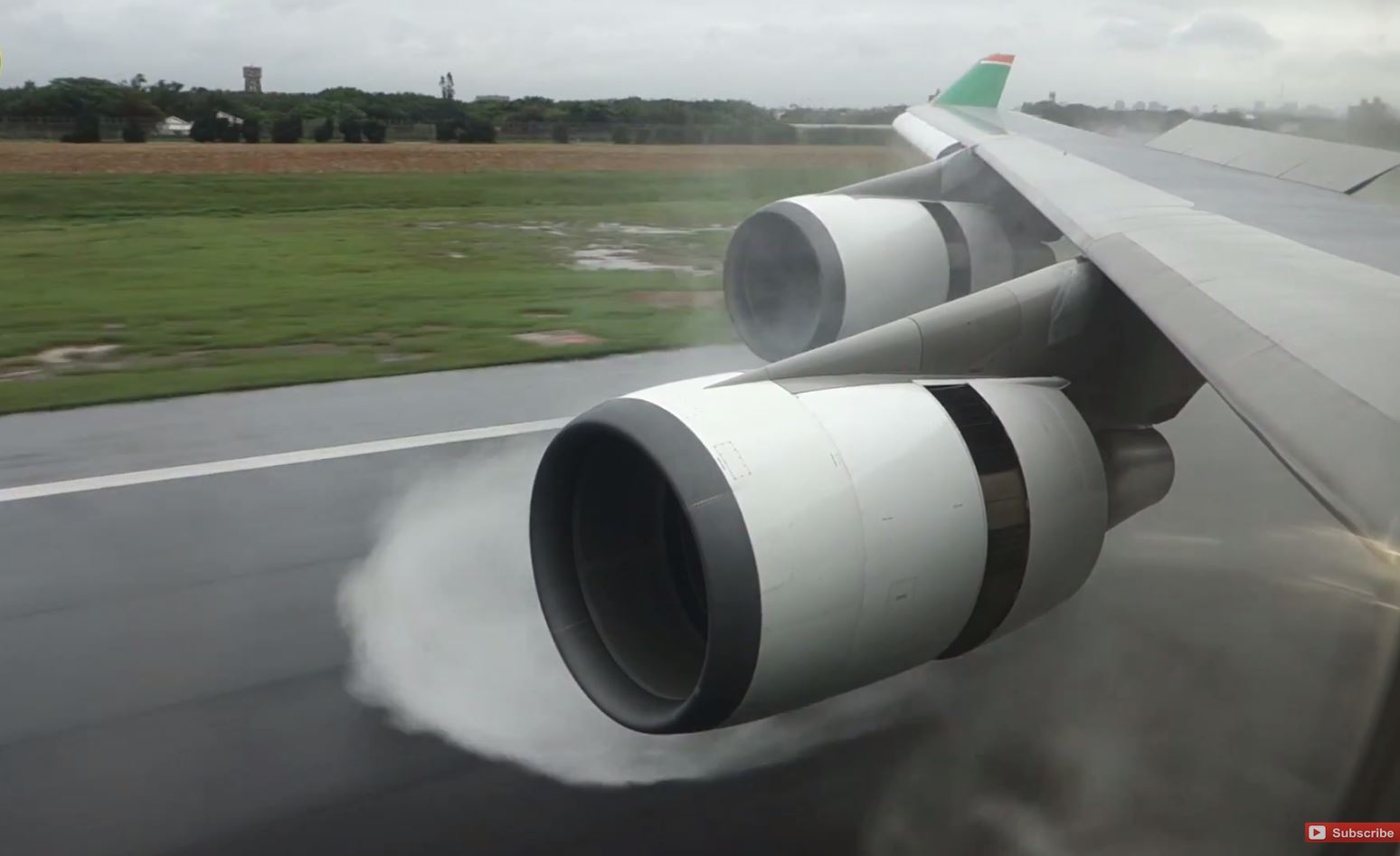by Captain Joe
What is reverse thrust and when do you use it?
Reverse thrust is used to slow down the aircraft on the runway after touchdown.
There are three main components which slow down the airplane on the runway:
Primary Braking with disc or carbon brakes similar to your car
Secondary with reverse thrust
Third with aero dynamical braking with the ground spoilers
So we have two words in reverse thrust.
“Reverse” cause the turbines output is being guided into the reverse direction and as you might not know we apply “thrust” in order to increase the braking action.
So let´s look at this video to see what happens at touch-down.
Here you can see engine number one of a Airbus A320. At touch-down these flaps open up, so called “reverser doors”. They act as guiding vanes in the mid section of the bypass-channel of the turbine and force the accelerated air of the fan to blow into the opposite direction.
Now these reverser doors don´t open automatically at touch-down, no you lift up these little levers which will activate the hydraulic system to apply pressure to the actuator which then opens the reverser doors.
Keeping the levers in this position only give you “Idle reverse”, but as soon as you move the levers to the aft position, the engine will spool up creating more thrust increasing the reverse output. The engines will increase thrust up to 70% which then resembles in “Full reverse thrust”. I know it´s odd to think that you would apply thrust again just after touch-down.
You can definitely hear the difference between “Idle” and “full reverse thrust”
Using the reversers significantly decrease the landing distance, varying between aircraft, weight and environmental factors. If you look at this great video of here, showing a Boeing 747 touching down and applying full reverse thrust you can clearly see how the water on the runway gets blown forwards.
So when do you use reverse thrust?
Using “idle reverse” at touch-down is mandatory by many aircraft manufactures and airlines. First and far most to immediately decrease the aircrafts speed and to stabilize the aircrafts roll out plus to reduce brake usage.
Landing on wet or snow contaminated runways using reverse thrust is absolutely vital to decelerate the aircraft and preventing it from skidding and keeping it in a straight line.
Full reverse thrust is not permitted at some airports due to noise abendement procedures or at least restricted in between hours from here to then. Nevertheless pilots can use full reverse thrust when deemed necessary, but might have to state their decision in a report.
Airplanes with wing mounted engines may only use full reverse thrust until slowing down to a specified speed, cause using the reverser below that speed could blow up loose gravel on the runway which could get sucked into the engine and damage the turbine. For example in an Airbus A320 you would have to reduce “full reverse thrust to idle reverse” at 70 knots, and retract the reverser at speeds below 40 knots.
There are many different reverser types out there, but all work after the basic principle by forcing the air or even the exhaust into the opposite direction.


Comments
One response to “What is reverse thrust?”